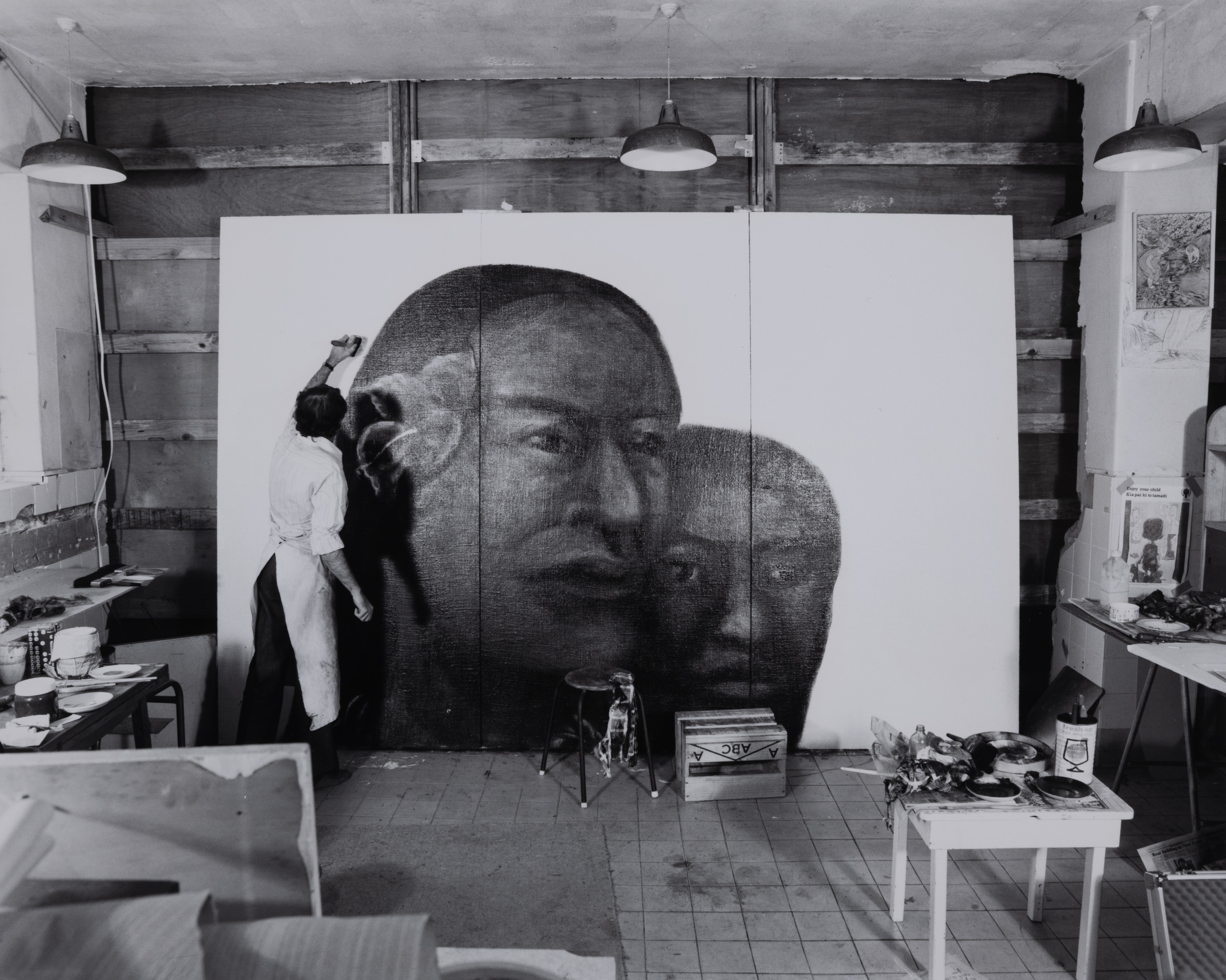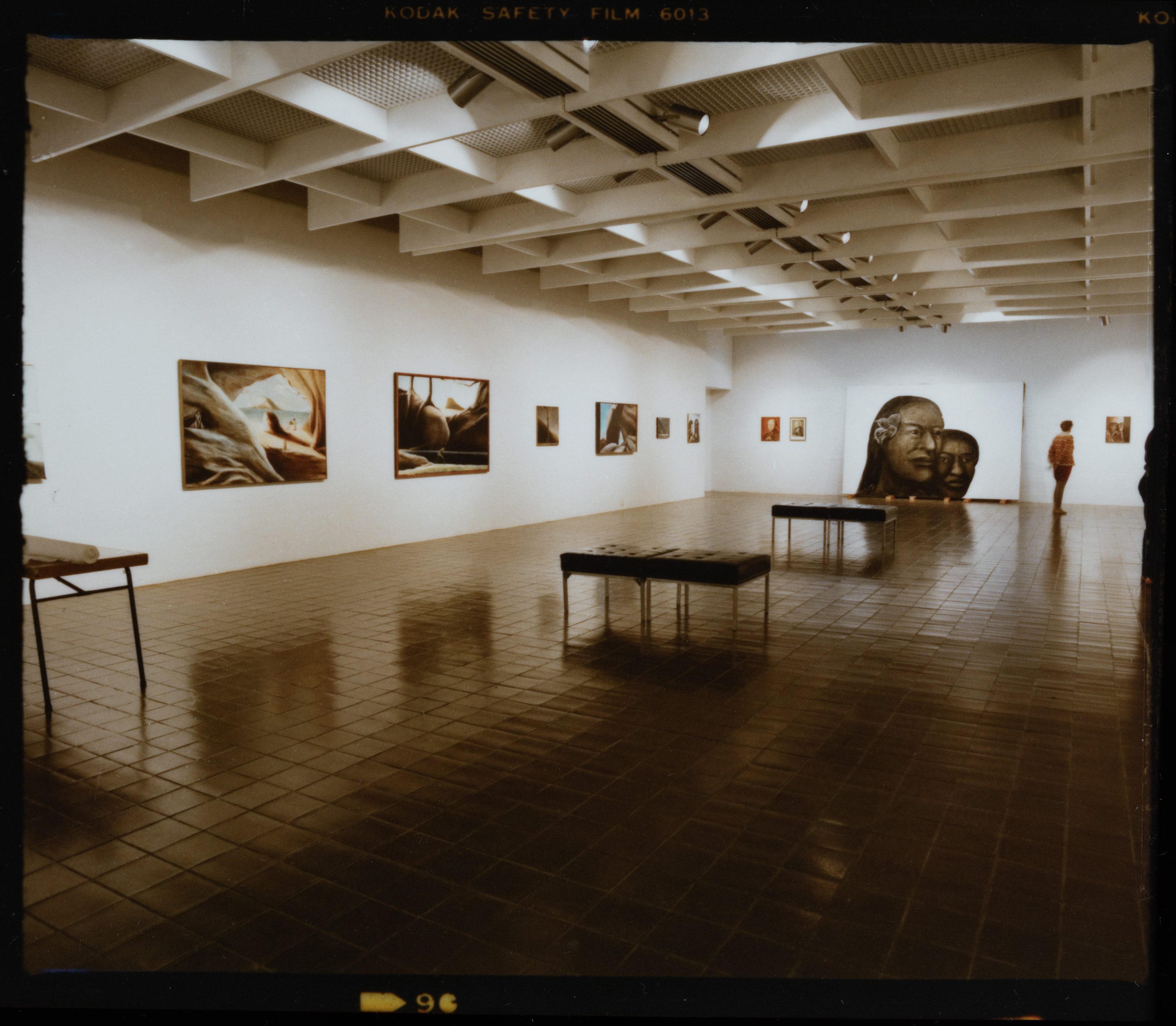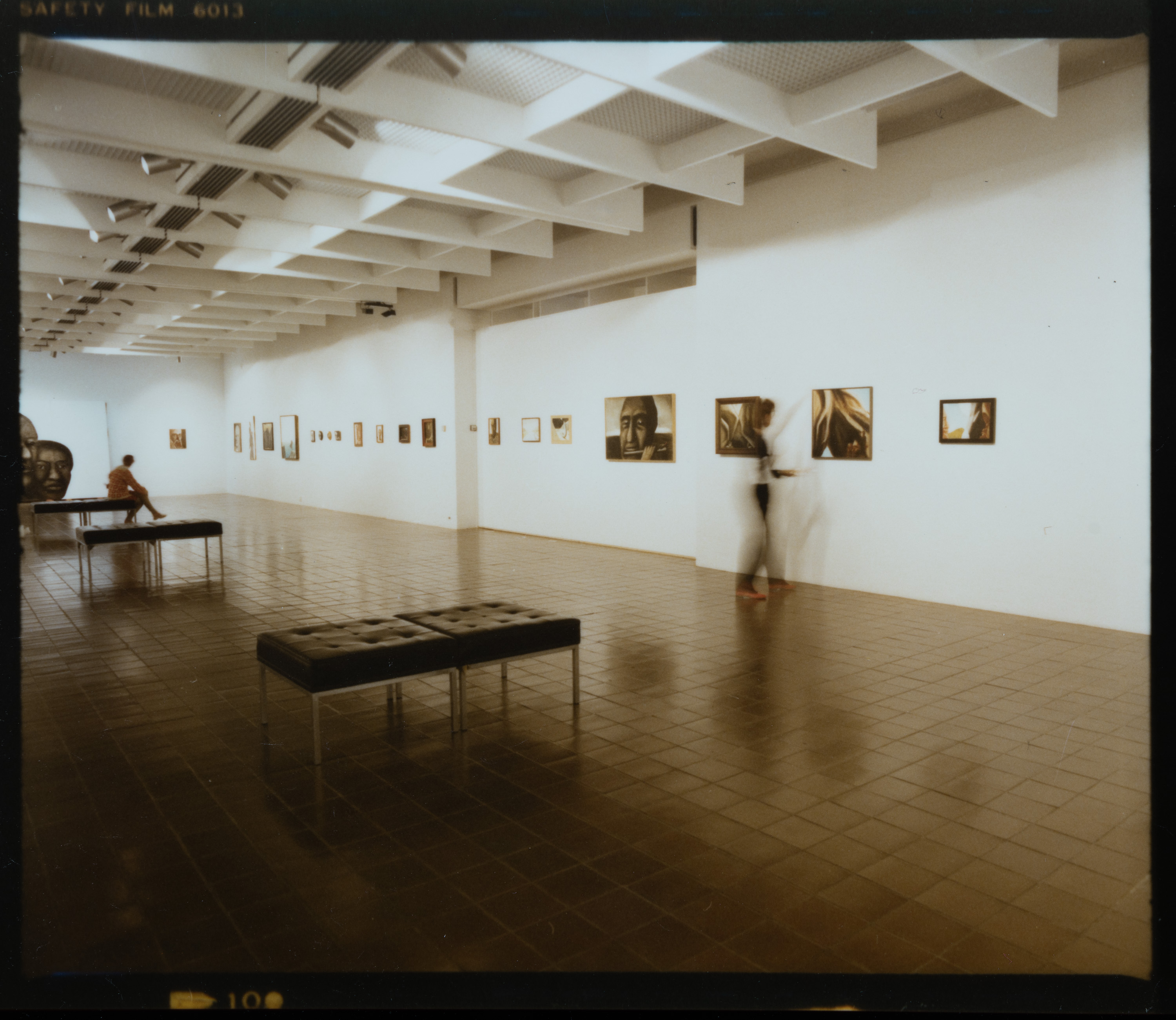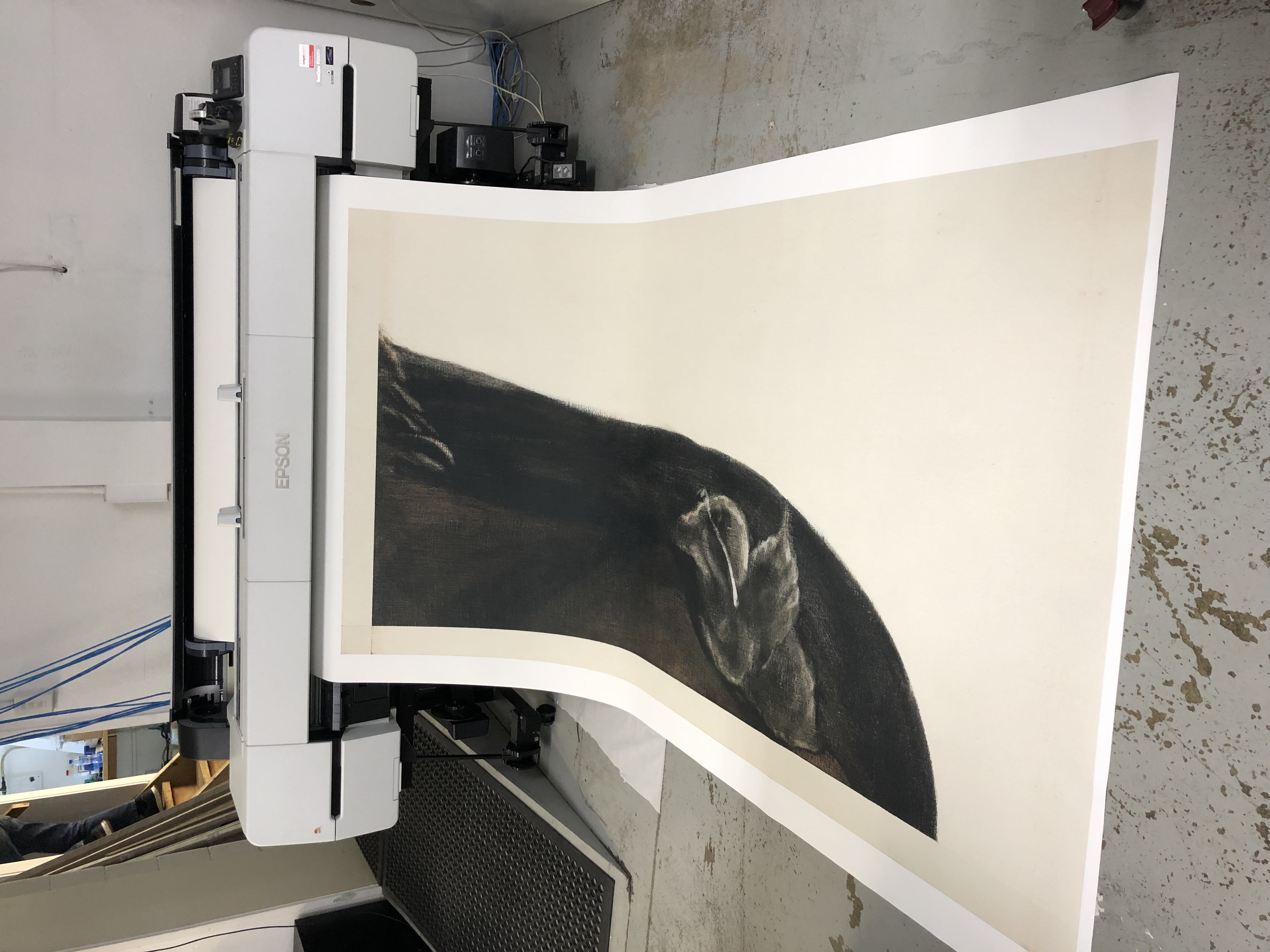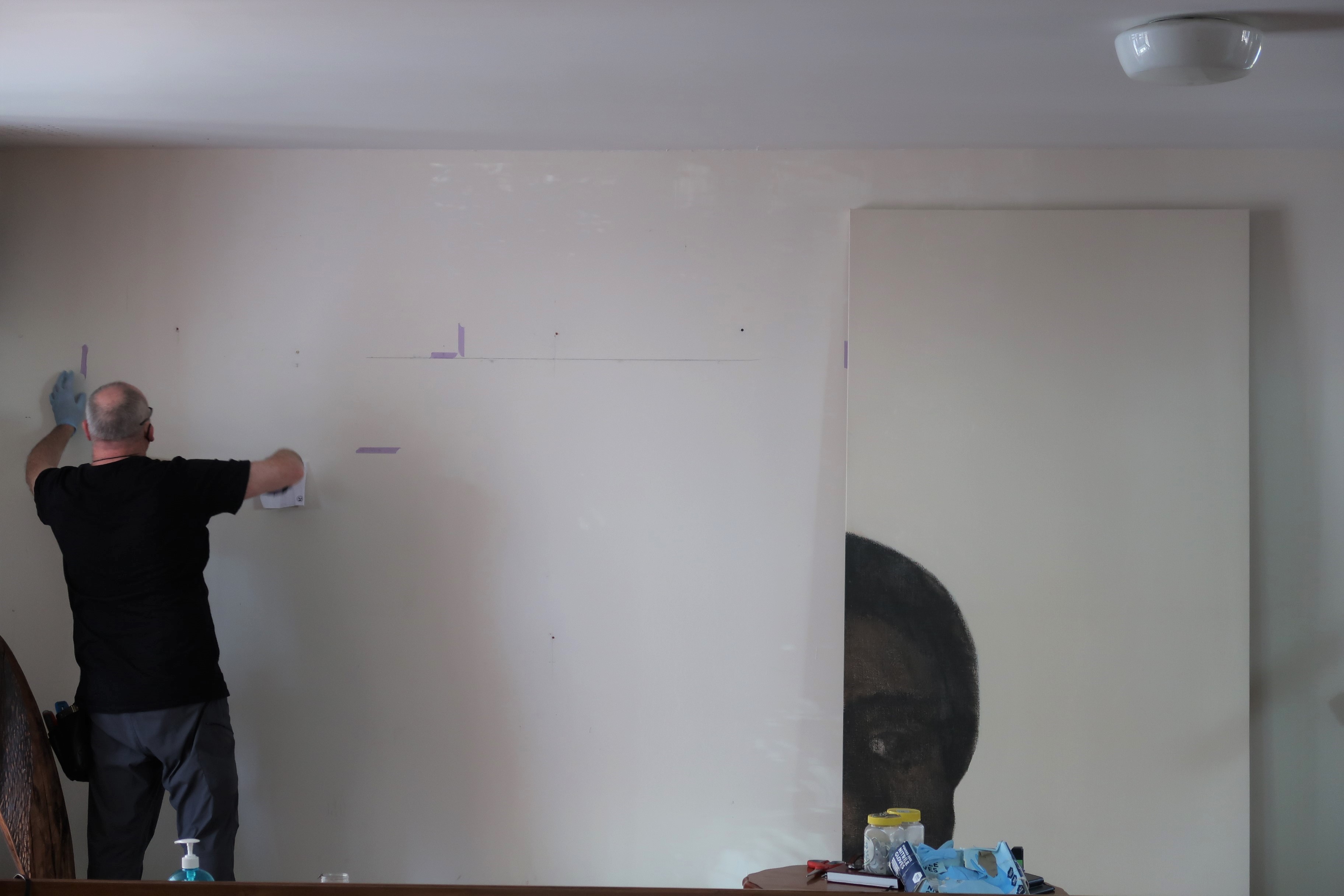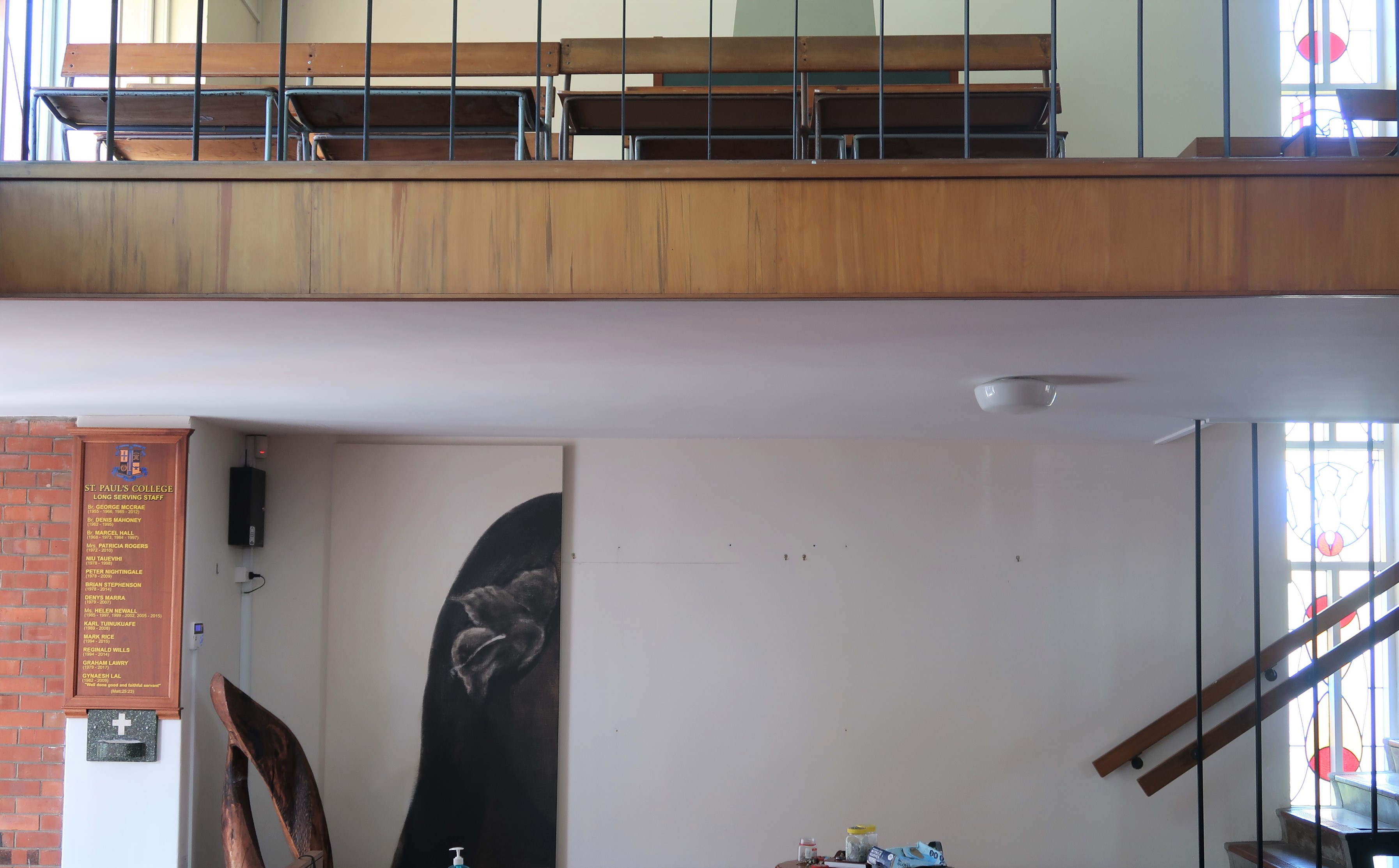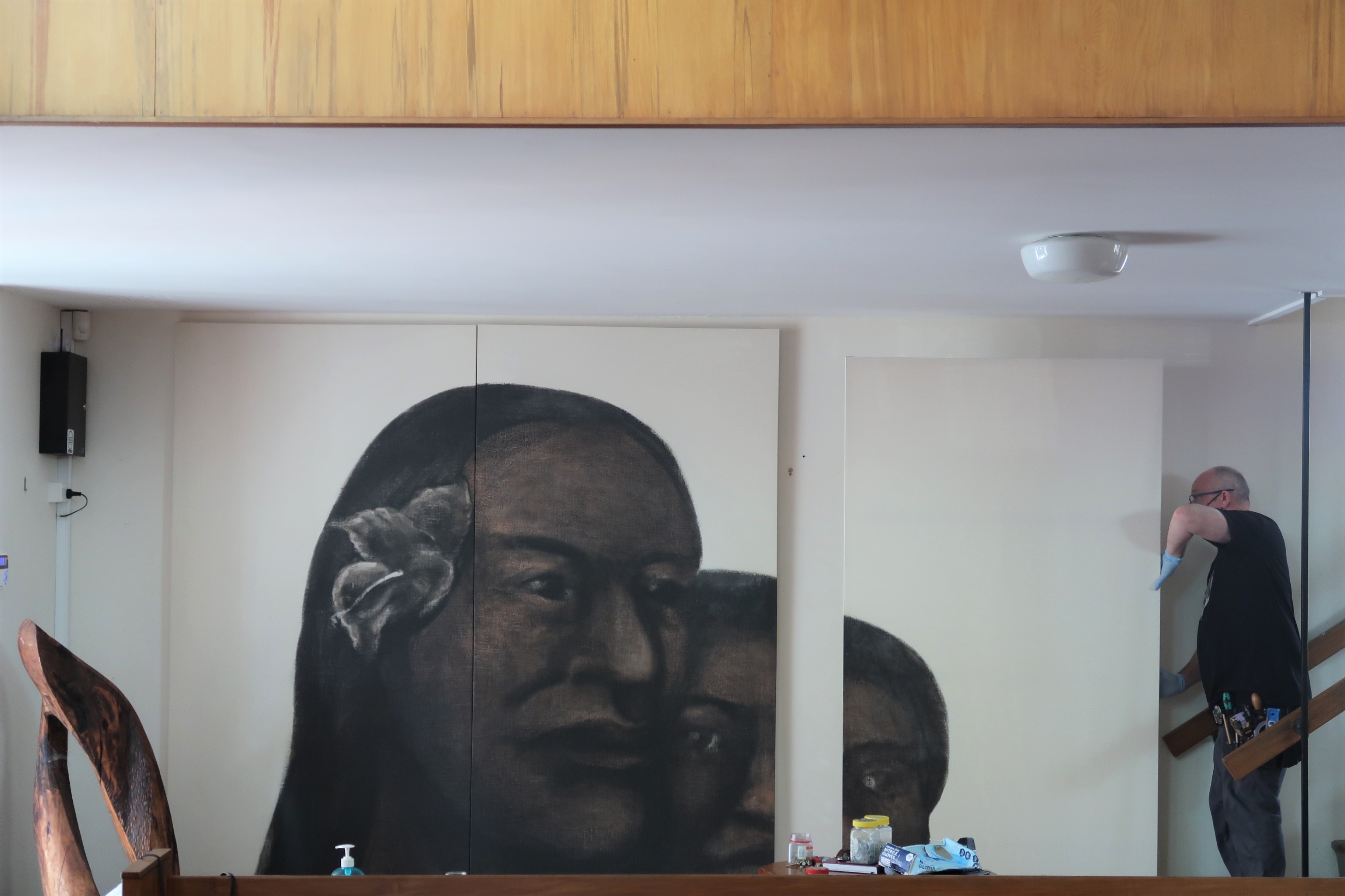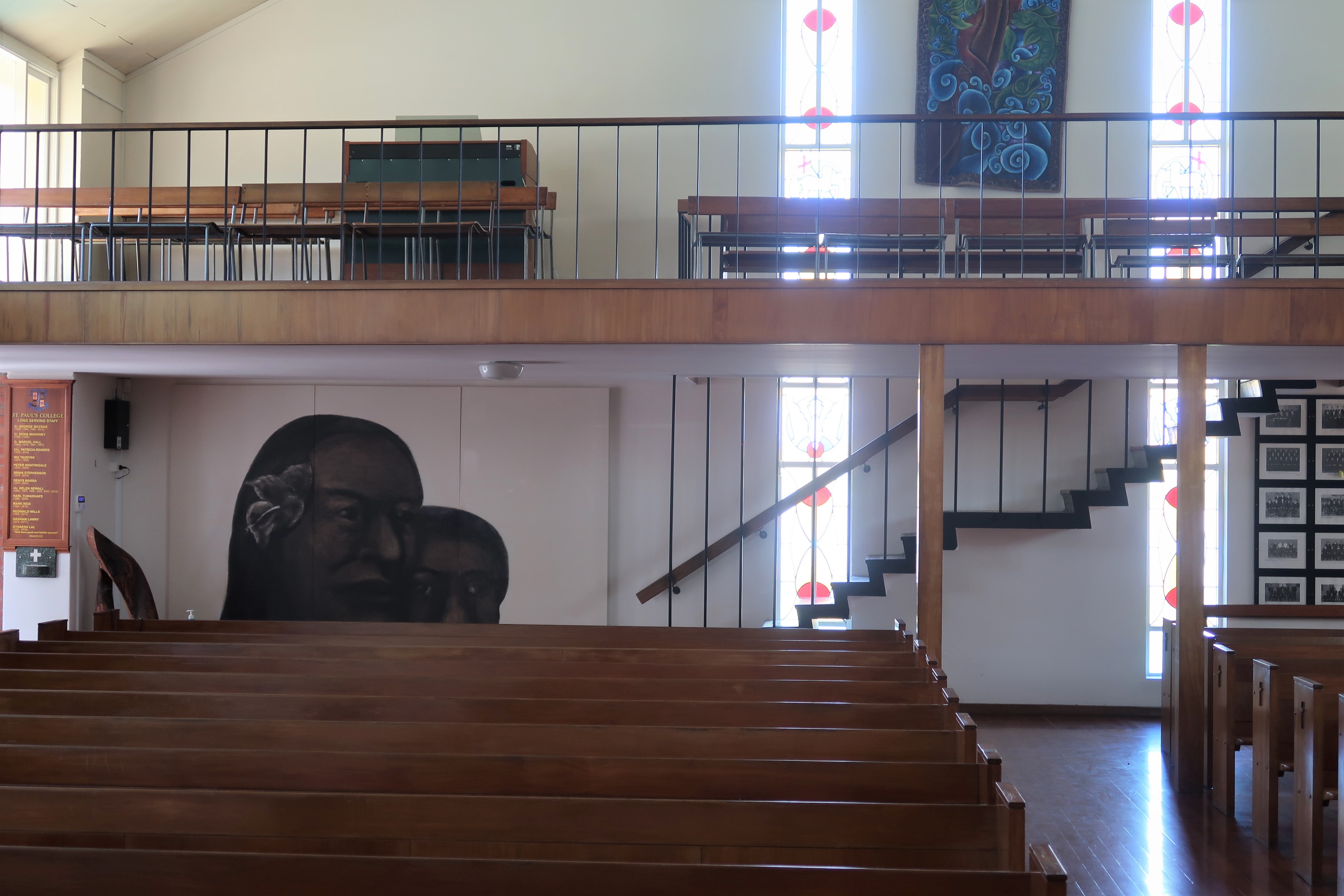Recently a life-size photographic reproduction of Tony Fomison’s The Ponsonby Madonna (1982–1983) was installed in the chapel at St Paul’s College in Ponsonby, Auckland, in the same location where it was displayed for over 20 years after its creation.
The Ponsonby Madonna is Fomison’s largest painting and his only mural. Incorporating three panels, it measures 2375 mm high and 3615 mm wide. Although Fomison created numerous religious artworks, this is his only publicly commissioned religious painting.
Fomison was commissioned by the Trustees of Saint Paul’s College in Ponsonby in 1982 to create a mural-sized painting depicting the Madonna and Child for the school’s chapel. After a stint living overseas until 1967, Fomison moved from Christchurch to Auckland in 1973 and lived there for the remainder of his life. His move north coincided with a progressive moment for the arts in New Zealand: the commercial dealer gallery scene was expanding, international exhibitions were increasingly being shown, more people were travelling internationally and returning with open ideas and ambitious visions.
The Ponsonby Madonna was one of many public art commissions undertaken in the early 1980s under the auspices of the New Zealand Government’s Department of Labour Temporary Employment Programme (TEP), which sought to provide work for artists during a period of increased unemployment. As part of this nationwide project, under the leadership of Hamish Keith the Auckland Council Employment Department established an initiative called Artwork to stimulate employment through the production of community art in Auckland. Over 150 artists were employed in the scheme between 1982 and 1983, including Emily Karaka, who produced Planting, Searching, Rising: Taupiri is the Mountain, Waikato is the River, 1983, which is now in the collection of Auckland Art Gallery.
The scheme enabled Fomison to work as an artist in residence at St Paul’s College on one project for six months. In the catalogue for his exhibition Bringing Back the Scattered, an Auckland City Art Gallery Artist’s project (1983), he described his desire to contribute a mural to the college:[1]
St Pauls College Mural. Murals have naturally been an aim of my work. This is my first, started early last year [1982] on a P.E.P. scheme supervised by “Artwork”. There were a number of us finding our sites around Ponsonby. I chose the College: it’s close to my place and involved in the local Polynesian communities. Being keen, the college met materials costs, and the repair person there carpentered the backing on which I laid the hessian. It required lots of coats of surfacing, and I could not meet the six months deadline. My paint brushes said that they were not interested in flat pattern decoration, they wanted to do a big picture, and they got me to cheerfully ignore all the pressures until I got the image we wanted. This image was the fourth in a long haul of scrubbing down and starting again.
In describing the painting’s subject, Fomison said:[2]
I had to keep the Christian image in mind, the fact that the school is 60% Polynesian, and it was my first mural, and I had to remember the local environment. Then I felt in my heart that the figure of the mother which is so important in the Polynesian extended family, the whanau, and the strong image of the Madonna and child could be linked. People said I was being too self-critical as I worked slowly towards the final image. But it had to be right, and because it was my first mural it was difficult.

